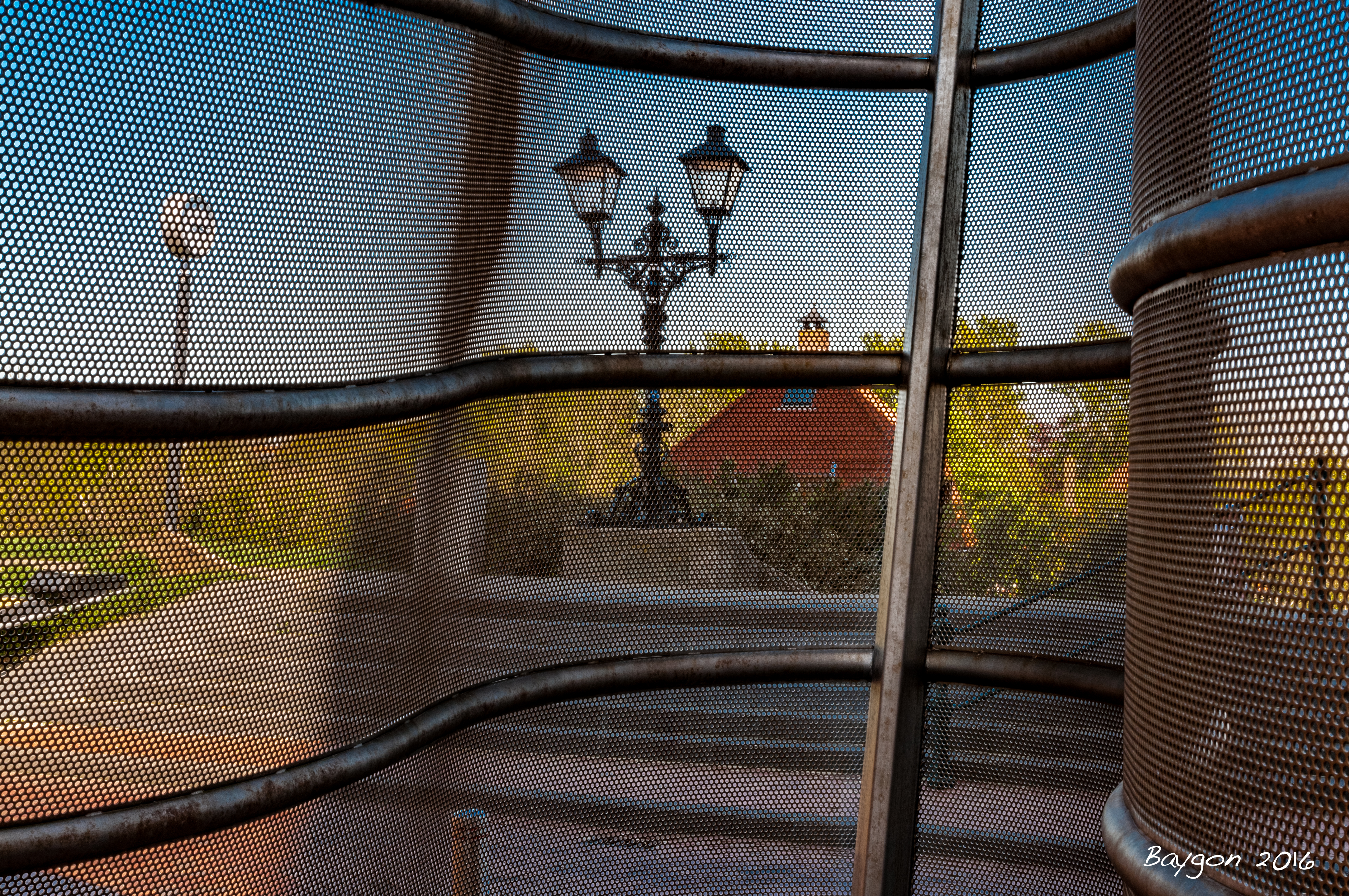Pass through the mysterious Iron Curtain and embark on an enrapturing journey, where tales of secrecy intertwine with dramatic episodes of hope and despair. Spanning the tumultuous era following World War II, this article delves into the enigma of the Iron Curtain, shedding light on its multifaceted layers. From impenetrable nuclear bunkers safeguarding vital state secrets to the heart-wrenching tales of individuals yearning for freedom at treacherous border crossings, this introspective exploration unwraps the secrets concealed within the oppressive boundary that vividly defined an era. Step forward into the dense fog of history, as we embark on a captivating voyage to unravel the mysteries surrounding the veiled divide that shaped the lives of millions.
Exploring the Mysteries of Cold War Nuclear Bunkers: A Glimpse into the Iron Curtain’s Hidden Secrets
Step back in time and immerse yourself into the hidden secrets of the Cold War era with a captivating glimpse into the iron curtain’s most enigmatic secrets – the nuclear bunkers. These underground fortresses were not just mere shelters; they were strategically designed to withstand the catastrophic aftermath of a nuclear attack. As you explore these mysterious relics, you will be transported into a world where fear and paranoia mingled with resilience and ingenuity. Trace the footsteps of the brave men and women who built and operated these top-secret installations, and uncover the untold stories that lay dormant within their walls for decades.
A visit to these nuclear bunkers is like stepping into a time capsule, where every corner reveals a fascinating piece of history. With their thick concrete walls, blast doors, and ventilation systems, these structures were created with one purpose in mind – to ensure the survival of their inhabitants amidst the chaos of nuclear Armageddon. Wander through the eerie corridors and witness the remnants of communication systems, radiation monitoring devices, and even makeshift hospitals that were meticulously planned to support a post-apocalyptic environment. Imagine the tension in the air as military personnel and government officials stood ready to face the looming threat of an impending nuclear attack.

Traversing the Border Crossings of the Iron Curtain: Navigating Divided Landscapes and Ideological Chasms
The Iron Curtain that once divided Europe during the Cold War was not just an abstract concept; it stretched across the continent as a physical manifestation of the ideological divide between the Eastern Bloc and the Western world. Traversing the border crossings along this contentious divide was a daunting task, fraught with tension, uncertainty, and complex political dynamics. These crossings, serving as gateways between two starkly contrasting worlds, were not only physical barriers but also symbolic representations of the deep ideological chasms that separated East and West.
Stepping foot in the shadow of the Iron Curtain was like entering a different realm altogether, where time seemed to hang suspended, and the air was heavy with the weight of history. Nuclear bunkers stood as somber reminders of the constant state of readiness for a potential nuclear conflict. These fortified structures, often hidden deep within the earth, served as both deterrents and protection against the looming threat of the Cold War. Standing inside these hallowed chambers, one could not help but marvel at the resolve and fear that permeated the minds of those who lived under the shadow of the Iron Curtain.
- In the midst of the divided landscapes, border checkpoints emerged as the lifelines between two worlds, where passports were scrutinized, and travelers were interrogated.
- Yet amidst the heightened tension, surprising tales of camaraderie and friendship found their place, as ordinary individuals sought connection and understanding beyond the iron divide.
Traversing the border crossings of the Iron Curtain thus meant navigating more than just physical landscapes; it meant grappling with the complexities of ideologies and the human stories unfolding in the midst of this divided world. From nuclear bunkers to border crossings, the Iron Curtain holds many untold tales waiting to be explored.

Unveiling the Lost Tales of Espionage: Unraveling the Dark Secrets of the Iron Curtain
Step into the shadows of history and discover the hidden truths behind the Iron Curtain. In this captivating journey, we unveil the lost tales of espionage that have long been shrouded in secrecy. Brace yourself as we delve into the dark secrets that once divided nations and kept the world on edge.
Prepare to be transported to a world of intrigue and danger, where nuclear bunkers served as silent guardians of national security. Explore the covert operations conducted by intelligence agencies on both sides of the Iron Curtain, as they sought to outmaneuver each other in a deadly game of espionage. Marvel at the ingenious gadgets and techniques employed by spies to gather vital information, many of which are still classified to this day.

Reimagining the Iron Curtain: Preserving its Historic Heritage and Promoting Peaceful Reconciliation
The Iron Curtain, a symbol of division and conflict during the Cold War era, is now being reimagined as a source of historic heritage and a platform for promoting peaceful reconciliation. While its original purpose was to separate the Eastern Bloc from the Western Bloc, today we look at the Iron Curtain with fresh eyes, recognizing its potential for fostering unity, understanding, and dialogue.
One aspect of this transformation involves the preservation of nuclear bunkers that once stood as ominous reminders of the arms race. These underground structures are now being repurposed as museums and cultural centers, providing visitors with a unique opportunity to learn about the realities of living under the threat of nuclear warfare. Through interactive exhibits, documentaries, and guided tours, these bunkers offer a sobering glimpse into the challenges faced by those who lived near the Iron Curtain.
Another way in which the Iron Curtain is being reimagined is through the establishment of border crossings that foster connection and collaboration. Previously, these checkpoints were heavily fortified and strictly monitored, serving as symbols of division and control. However, in light of the changing times, efforts are now being made to transform these sites into symbols of unity and cross-cultural exchange. By facilitating easier travel and promoting cooperation, these border crossings aim to pave the way for peaceful reconciliation and understanding between nations that were once divided.
In Summary
As the iron curtain slowly lifted, revealing the secrets that lay beyond its imposing borders, one cannot help but marvel at the resilience and ingenuity of those who lived in the shadow of this formidable barrier. From underground nuclear bunkers to treacherous border crossings, this eerie yet fascinating chapter of history leaves an indelible mark on the human psyche.
With its creative melding of architecture and engineering, the nuclear bunkers became both symbols of protection and reminders of the horrors that lurked above. Their concrete walls stood as silent guardians, offering a glimmer of hope and sanctuary amidst the constant threat of annihilation. These subterranean fortresses lay as testament to the lengths nations were willing to go to secure their power and protect their people.
However, it was at the border crossings where the true dichotomy of the iron curtain unfolded. Close enough to touch yet impassable, these checkpoints became the very embodiment of the separation and anguish experienced by those on either side. Families torn apart, dreams shattered, and lives forever altered – all under the watchful gaze of the iron curtain. The neutrality of this article pays homage to the countless stories of bravery, tragedy, and resilience that unfolded along these infamous borders.
From the mesmerizing landscapes that bridged nations to the haunting stories of those who dared to cross, the iron curtain represents a dual reality. It served as a barrier that divided, oppressed, and instilled fear, while also fostering a sense of unity, resolve, and the ever-present pursuit of freedom. In its creative ambiguity and neutral tones, this article respectfully honors the complexity of the iron curtain’s legacy.
As the pages of history turn, the iron curtain’s presence endures in our collective memory, reminding us of the enduring power of human spirit and the triumph over adversity. The nuclear bunkers, once silent witnesses to the grave tensions of the Cold War, now stand as eerie reminders of our shared past. The border crossings, once the stage for division and anguish, resonate with stories of resilience and hope.
In this exploration of “The Iron Curtain: From Nuclear Bunkers to Border Crossings,” we have embarked on a journey across a fascinating yet somber landscape. Through its creative lens and neutral tone, this article endeavors to capture the emotional tapestry woven by the iron curtain, leaving readers with a profound appreciation for the triumphs and tribulations of those who lived behind it.

